Bioneer’s exclusive Schizosaccharomyces pombe (S. pombe) Genome-wide Deletion Mutant Library is a powerful tool for
large-scale genetic functional analysis, identification and verification research of drug targets and for integrated systems
research of cell function. Co-developed by Bioneer and KRIBB in collaboration with Dr. Paul Nurse of the Cancer Research Center
in UK, the S. pombe Genome-wide Deletion Mutant Library can be used for genetic and chemical screening such as drug target
identification, gene expression profiling, and synthetic lethal profiling. S. pombe offers higher homology with mammalian cells
and human genes than those of S. pombe. S. pombe Genome-wide Deletion Mutant Library targets every ORF (4,914 types)
in the S. pombe genome through a targeted mutagenesis method.
A total of 4,836 heterozygous diploid deletion mutants representing 98.4% of the organism genome and 3,400 haploid deletion mutants with 95.3% genome coverage are available. Since there are different tag sequences (Barcode) in each individual mutant,
the library provides an ideal way to approach research in gene function and drug target screening for large numbers of genes
by using pools of mutants. It is also possible to analyze biological gene functions through phenotype research with the deletion
mutant having specific genes absent.
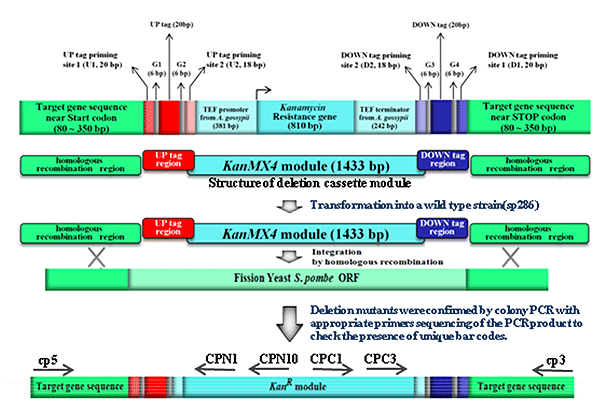
Features and Benefits
Genome-wide deletion mutants library (Only 2 kinds exist: S. pombe & S. cerevisiae)
It is similar with physiological process of mammalian cells
It has human cancer gene and over 30% of homology
It has the rapid cell cycle that it is simple to analyze molecular biological mechanism and pathway
Phenotype analysis is possible since it is recessive mutant type
Unknown genomic function analysis through functional complementation is possible
Analyzing genes biological mass function is possible using Genome-wide pool set
Cell base HCS drug target screening is possible
Application
Application #1 (Anti-fungal)
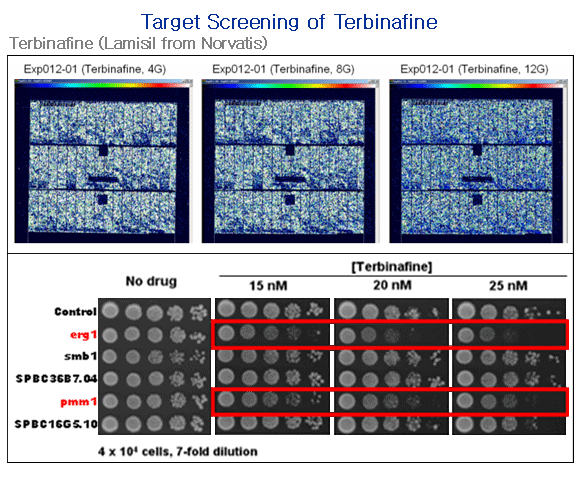
Another specific target (pmm1) of terbinafine was identified in addition to erg1, which would be useful for elimination of unwanted side-effects.
The novel target was confirmed by biochemical methods such as HPLC, and the results showed that terbinafine inhibited the enzyme in a direct way in a dose-dependent manner.
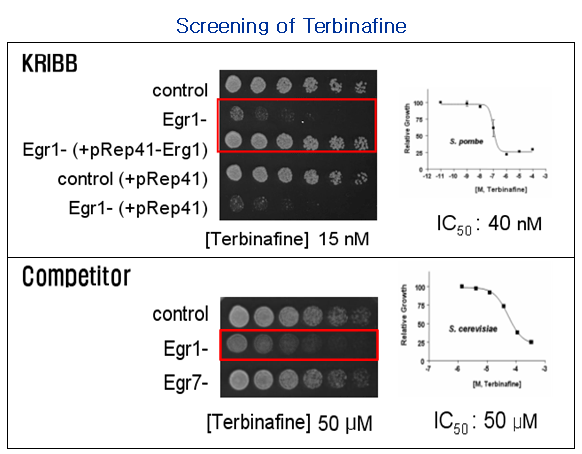
Our S. pombe system is 1000-times more sensitive to Terbinafine than S. cerevisiae system,
which means more specific.
Application #2 (Anti-hyperlipidemic)
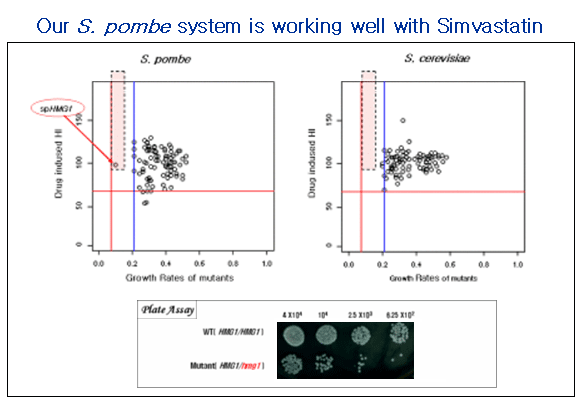
Our S. pombe system is better than the previous S. cerevisiae system.
Application #3 (General toxicity)
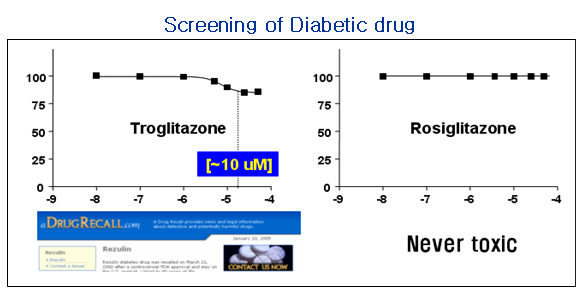
General cytotoxicity screening at the initial stage of drug development to save decision time and prevent a disaster
such as recall.
Advantage of our system
1. Complementary to the previous S. cerevisiae system
- by increasing gene number from 6,000 of S. cerevisiae to 11,000 genes including those of S. pombe
2. Superior than the budding yeast system
- S. pombe is named as micro-mammal by NIH grouping of model organisms
- S. pombe system is more sensitive to anti-fungal drug (Terbinafine) by 1,000 times
- S. pombe system is working with anti-hyperlipidemic drug (Simvastatin)
- S. pombe system is constructed and up-graded only by us, which means reliable